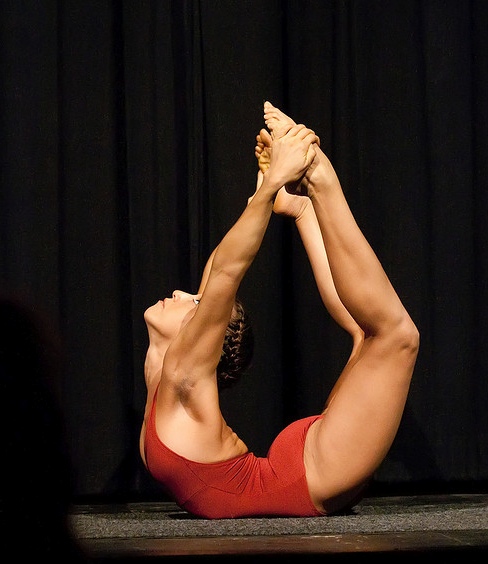Competitive yoga as an Olympics sport will no longer be a stretch.
From Lausanne, Switzerland: As the International Olympics Committee had recently voted to drop wrestling—the oldest competitive sports known in the world dated as far back as 3000 B.C. and part of the ancient Olympics in 708 B.C.—from the 2020 Summer Olympics Games, IOC is looking to replace it with a globally popular and widely represented sport to the mix.
Naturally, many contending popular longstanding sports, such as cricket, boast tremendous numbers of followers and lobbyists—both fans and players alike. But is there a sport counting over 300 million active players worldwide—more than soccer—but is not an Olympic sport?
Yesterday, the 15-member IOC executive board reached a decision after evaluating a deluge of information and statistics and voting based on 39 different criteria, including television ratings, anti-doping policies, global participation and popularity.
Yoga will soon be added to the 2090 Summer Olympics Games.
After the decision, the President of the IOC executive board, Jacques Rogers, expressed satisfaction: “Yoga is an ancient sport and combines both mental as well as physical fortitude. The committee believes that it will make a fine addition to the Summer Games and we look forward to representatives and athletes from around the world joining us in 2020.”
In addition, the committee also indicated that the competition will most likely be open to all schools of Yoga. Finer details will need to be established.
That is, after a final vote at the IOC general assembly in September held at Buenos Aires, Argentina.
Roger Cooper, President and Founder of the United States Yoga Council, released the following statement:
“Yoga is a sport with centuries of history. Its mental and physical demands sometime far exceed those required by other sports. We are glad to see that our sport is being recognized at the highest level and look forward to assist the United States Olympic Committee in the assembly and training of our athletes.”
Though yoga’s originated in India more than 5,000 years ago, it has been increasingly popular around the world in recent decades and continues to reach more various demographics throughout the world. From a 1994 roper’s poll, six million Americans practice yoga. In a 2011 statistics study, there are approximately 15 million Americans who practice yoga, and the average annual increase of the number of people who practice yoga is estimated to be twenty percent.
Upon first thought, many may wonder: “How is yoga a competition?” Further, what would be the objective in such a competition in which athletes are not expected to put a ball in a goal of some sort nor are they pitted head to head? Clues may be observed in a recent event held by United States Yoga Council.
Between March 1st and March 3rd, the National Yoga Asana Championship was held in New York, where regional champions gather to perform a select set of asanas (postures) and optional ones selected by each competitor individually. Each competitor will do a three-minute routine consisting of five required poses and two poses of their choice. Younger participants, ages 11 to 17, complete six rather than seven poses.
Competitors are judged on technical execution, level of difficulty, poise and composure, and grace of movement. If you think all of these sound very similar, then you are very much correct. They are also some of the basic categories for judges in such Olympic events as gymnastics and diving.
Rachel Nahtsaufahsta, a U.S. Olympic gymnast who earned a Bronze Medal on the 2008 U.S. Olympic Team, explains:
“Between gymnastics and yoga, I believe they can be complementary but at the same time demand different set of physical skills. But fundamentally, competitive judging will need to rely on very much the same subjective measures as other Olympic sports not driven by time objective metric such as score or time.”
Although some may object to the notion of “competitive yoga,” almost all universally agree: Yoga is accessible to all ages and people from all walks of life in all conditions. It has tremendous benefits potential even if one practices only occasionally. Yoga as an Olympics sports will only bring the larger communities of all different cultures and participants together to share this path of honoring the unifying spirit of the Olympics. Whether one is a yoga athlete or novice yoga enthusiast, the paths are many, but the inspiration is based on such unifying meaning.
Certainly, with the 2020 Olympics Games is still seven years away, countries worldwide have ample time to prepare their athletes to enter the first Olympic Yoga Competition.
Like elephant Yoga on Facebook.
Ed: Kate Bartolotta
{Photo: by Ron Sombilon Media, Art and Photography via Flickr}

 Share on bsky
Share on bsky







Read 23 comments and reply